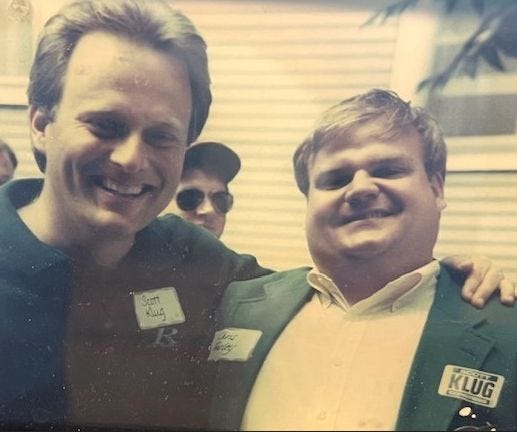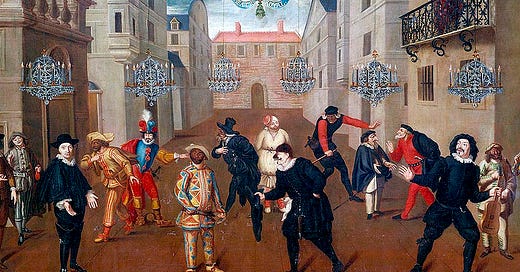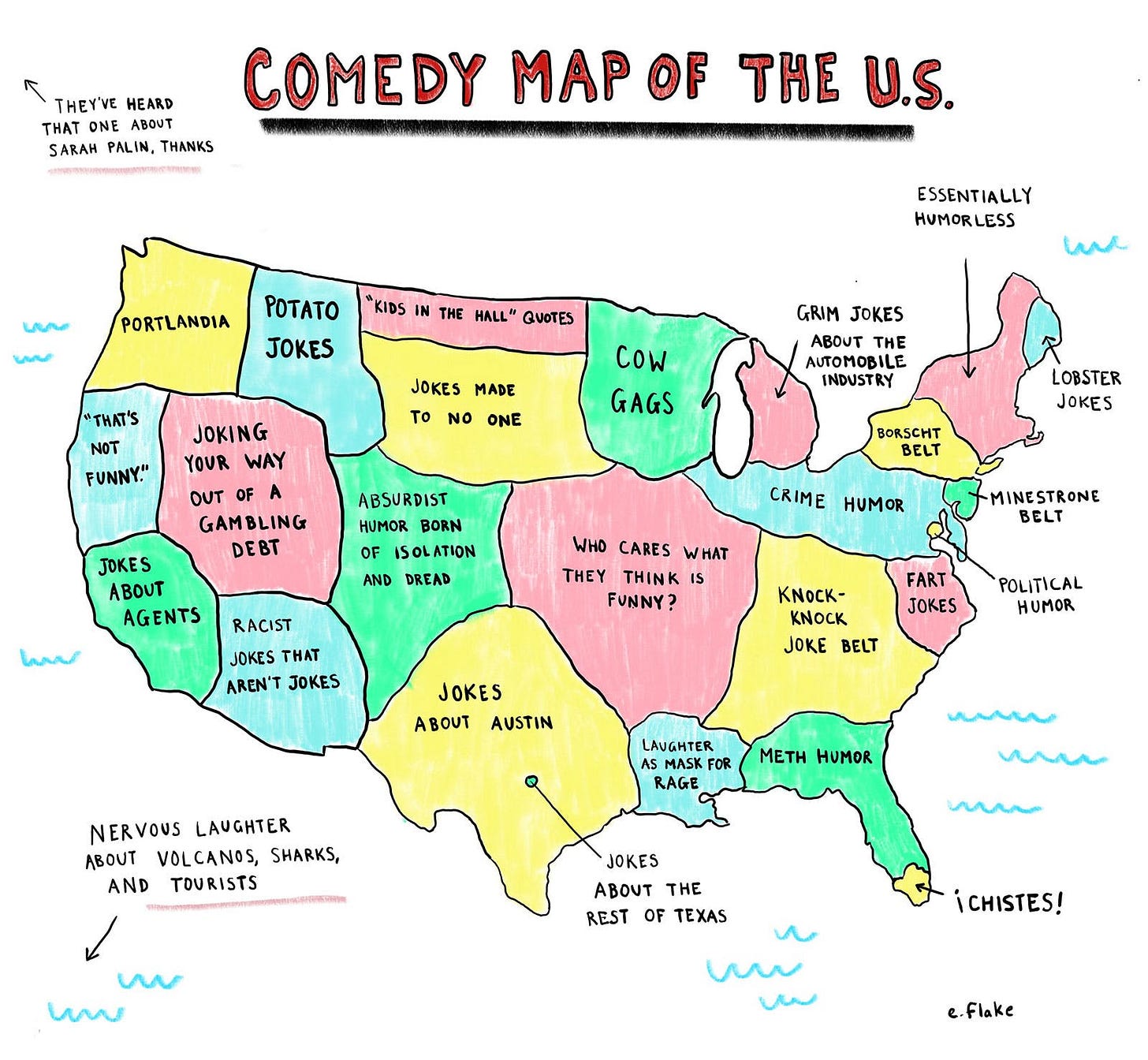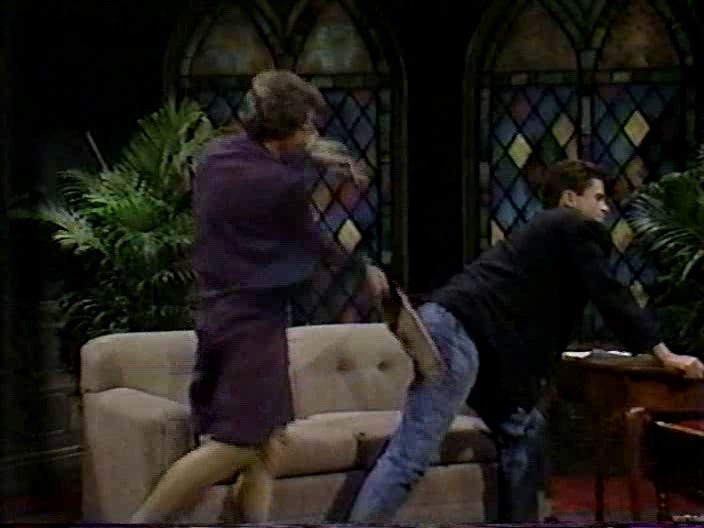Prospects Of A Faith-Friendly Saturday Night Live
Responding to Marcus Pittman and Terry Mattingly
“If we want to win the culture war, we need a Saturday Night Live.” So says Marcus Pittman, who describes himself as “passionate about storytelling”. Noticing that the now 50-year old show is the central artery of the American entertainment world, he elaborates: “We need to think in terms of incubators and talent generators. We need to platform artists that no one knows about and create mechanisms where unknowns can build a name for themselves. We need to create systems that allow artists to fail, over and over again, until they finally get something right. It’s not about hiring the most well known actors, but building the next generation of cultural influencers, and then doing it over and over again.”
If nothing else, Pittman is someone who’s put his money where his mouth is, someone who’s walking the walk. He’s the founder and CEO of LOOR.tv, described by one guide as a combination of Netflix and Kickstarter. “We have 40 movies and TV shows signed exclusively on our platform that we’re raising money for right now,” Pittman said. “Once those are funded, they’ll stream on our platform exclusively.”
Certainly, there are entire volumes of Christian history that would make splendid movies or series. One idea that always intrigues me, a niche topic, is the tale of the English Orthodox Diaspora who immigrated to Constantinople after the Norman Conquest of 1066, and their years of service to the Byzantine Empire. Another one, less niche, is the hagiography of Saint Cyprian Of Carthage, who had previously been a skilled, high-ranking sorcerer in the service of Satan, who spoke to him face to face the way Moses spoke to God. Cyprian’s fruitless battle against a lionhearted young Christian girl was what eventually caused him to defect and convert to Christianity.
I count myself among the many people sympathetic to Marcus Pittman’s work. Which is why his topic, and other topics directly related to it, is what I want to discuss.
Saturday Night Live: Past And Present
Terry Mattingly of Rational Sheep has commented on Pittman’s original article by adding: “Many entertainment giants are struggling these days to reach Middle America…who are the first funny young folks who come to mind if you are trying to create a cast for a truly countercultural SNL for the other half of America?”
“The other half of America”? This statement arises from a perception that Saturday Night Live is, and has been, where the Democratic Party gathers to viciously mock their enemies and burn effigies of them, a common portrayal of SNL in the right-wing media. While I don’t think this perception is completely devoid of merit, especially during Trump’s first term in office, I do find it greatly exaggerated.
Jim Downey, legendary SNL writer who spent 30 years working at the show, with 10 of them as head writer, is often described as a somewhat conservative fellow, and was ruthless in his treatment of Bill and Hillary Clinton in the 90s. It’s not exactly difficult to find lists of SNL cast alumni who rejected the liberal narrative to varying degrees: Dennis Miller, Joe Piscopo, Jon Lovitz in more recent times, Victoria Jackson, Jim Breuer, Rob Schneider, and the late great Chris Farley.

The same can be said of the show’s hosts. Let’s focus on merely one era of the show, the 1986-1991 Renaissance Era which I personally think is the show’s best era. In these seasons, notable non-liberals Charlton Heston, Mel Gibson, James Woods, Dennis Quaid, John Malkovich, Bruce Willis and Wayne Gretzky all hosted. And let’s not forget that Donald Trump hosted SNL after he crafted a presidential campaign using borderline White Nationalist elements.
Even after the humorless cold opening after Hillary’s 2016 defeat, where she (played by Kate McKinnon) performs “Hallelujah” on piano, the moment where Rob Schneider claimed the show “died”, an era where claims of liberal bias seem most accurate to me, the show surprised a lot of people later that season when it aired the “Dog Translator” sketch, which portrayed liberal White women as shrill hypocrites and Trump voters as down-to-earth people who merely felt the country needed some changes to be its best.
More recently, there is evidence that Lorne Michaels explicitly sought to add Shane Gillis to the show’s cast to counter claims that SNL is a liberal show. Even after some of Gillis’ material was considered too over-the-top to place him in the cast in this age of Cancel Culture, Michaels claimed people were hysterically overreacting to Gillis, and he has gone on to host the show twice.
The history of Saturday Night Live, has been reviewed and analyzed on a sketch-by-sketch basis and those who know this history know that when the show decided to get political, liberals frequently end up in the crosshairs. I think the biggest case against the “Liberal SNL” argument comes from the aforementioned Rob Schneider though, who in more recent years has swallowed his prior words about SNL’s “death”.
So, excuse me if I’m unconvinced that Saturday Night Live doesn’t care a whit about “the other half of America”.
Who’s Ahead In The Culture War?
In a comment left on Pittman’s article, someone mentioned that there already exists a “conservative Saturday Night Live” of sorts: the Kill Tony podcast. “[It] moved to Austin, Texas after getting ‘canceled’ in L.A. by a CCP-funded comic, and now is filling arenas. Just like SNL, the platform is designed to discover new comics - except ANYONE can sign up to perform a minute - and the live audience really is the judge of who is funny. It’s as edgy as SNL was in the 70s, and often funnier too.” Additionally, the Babylon Bee has been putting out solid, amusing, culturally relevant articles for years. Kill Tony and the Babylon Bee, however, are hardly the reaching of a saturation point.
We don’t live in the 1980s anymore. The humorless right-wing televangelist blowhards of the time, the Jerry Falwells of the world, lost power when humour was aimed at them. Falwell has been replaced by the strident feminist and the gender revisionist as a particularly mockable segment of society, which is why alot of the best comedy of our times (see: Dave Chappelle) devotes itself to reigning in the excesses of social justice. One theory I’ve developed is that the ideological movements that die quickest are those that can’t develop a sense of humour or can’t tolerate being examined by comedians, that it’s a direct cause of death.
At the time of the 2008 U.S. presidential election, behavioural scientist Dan Ariely of M.I.T. interviewed almost 300 people in the Boston metropolitan area about their political beliefs, and then asked them to rate how funny they found a number of different jokes. There were seven categories of jokes (one of which was quotes from Deep Thoughts, a segment created by one of my all-time favourite SNL writers, Jack Handey) and self-described conservatives gave a higher average rating to the jokes in all 7 categories than self-described liberals did. While some people may not think much of this experiment, it’s a puzzle piece that connects well to the research demonstrating that conservatives are, on average, happier people than liberals. If this is true, comedy might have inherent guard rails to regulate it, preventing it from travelling too far to the left.
A meme titled “Comedy Map Of The United States” describes New England and Northern California as lacking a sense of humour. These two areas are also staunchly on the cultural left, unshakably Democratic in their voting. That’s not a coincidence.
The reader is invited to contemplate all these ideas in the quest to determine which camp actually holds the cultural momentum currently. Was the transgender phenomena the moment when society officially decided the left had gone too far?
Envisioning The Artist’s Stage
“Try to imagine a faith-friendly Saturday Night Live”, Terry Mattingly instructs us. “If ‘cultural conservatives’ want to create an SNL-model incubator in the wild, wild, world of online streaming mass media, to whom would they hand the reins?” Great question, to which I’d add: what would the finished product actually look like?
I’d start off with what the show is like at its best. Then, I’d remove a decent amount of the Blue Material. Not all of it though. Unlike some people, I think it’s fine for Christians in comedy to occasionally wander into Blue Territory. Then, I’d create a second anchor for the show. SNL is, after all, a show about what’s exciting in the moment, a church of what’s happening now. It’s committed enough to this purpose that it actually can serve as a historical record of what things had captured the public’s attention at what times. But this is an unbalanced perspective that neglects the historical, and its arguably SNL’s Achilles heel. Compared SNL with the BBC’s The Nearly Complete And Utter History Of Everything (1999-2000), which featured a sketch about the Treaty Of Westphalia. This is what I’d love to see a “faith-friendly SNL” do. The third and final addition is simply a larger collection of written sketches that take their inspiration in parish life, etc. Dana Carvey’s Church Lady set the gold standard for this, but we need more.
The Christian Comedian In American Life
In his reply to Marcus Pittman, Terry Mattingly says: “Name three or more religious believers who have made an impact on the mainstream culture of American humor over the past few decades.” For his part, Mattingly lists Bob Newhart and Jeff Foxworthy. Good picks, to which I’d add Norm Macdonald and Nate Bargatze.
In the last decade of his life, tragically cut short by cancer, Norm Macdonald, SNL’s legendary Weekend Update anchor and relentless roaster of O.J. Simpson, became quite religious and would sometimes mention his Christianity in stand-up routines or interviews. He even wrote objections on Twitter to statements made by secularists Richard Dawkins and Neil DeGrasse Tyson. As for Bargatze, he’s mentioned his faith at times as well, it’s been an inspiration for him to keep his standup clean. Washington’s Dream, parts 1 and 2, starring Nate Bargatze as George Washington during his two hosting stints, are often held up as new school SNL at its best, quintessential proof that the show has never fully stopped producing good sketches.
What unites Newhart, Foxworthy, Norm and Bargatze is that they all utterly eschew a ghetto mentality. In the early 90s, Mark Noll, who authored The Scandal Of The Evangelical Mind, mentioned that, even among more intellectual Christians, there wasn’t enough cross-pollination, i.e. Masters Of Divinity degrees working alongside people researching chemistry or physics, and that far too much of Christianity was walled within a ghetto that failed to interact heavily with non-Church institutions. Bargatze, by contrast is just as much in his element hosting SNL or talking with Conan O’Brien as he is in a Baptist Church. The fact that his most famous sketch isn’t about the Bible, but instead about American history returns us to the ideal of a Christian we find in Saint Bede The Venerable, one who is interested in researching or teaching about a wide variety of topics, not the Bible alone. Few things would give me as much agony as the advertisement of a “faith-friendly SNL” that turns out to be nothing more than 90-minutes of obsessive rumination on “praise Jesus and own the libs”. The show has to be run by people who value humor, laughter, satire, wordplay, nonsense, etc. as ends in themselves in God’s creation, not for any utilitarian purpose.
One More Question…
The subtext in Marcus Pittman and Terry Mattingly’s words is something I want to draw attention to, and open my (usually closed) Comments section for. Why is that that most artists in America, both past and present, seem to be liberal/progressive in their politics, with conservative artists being noticeably rarer? Why is it, that when someone tells us they’re a painter, a sculptor, an illustrator or a professional musician, we might automatically assume their politics are left-of-center? Why does this also seem to be the case in Britain, and again in Canada? Post your thoughts below, because this question will be returned to in a future Monadnock Review article.
If you’ve enjoyed this article, please consider supporting The Monadnock Review by buying us a coffee here! A one-time donation of $4 is both less costly and less of a hassle than the long-term commitment of a $5 monthly paid subscription.







It seems to me that a conservative artist is an oxymoron. Art seeks to ask the unanswerable questions. Within a conservative worldview, most ‘answers’ have been provided.